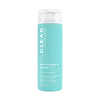What's inside
What's inside
 Key Ingredients
Key Ingredients

 Benefits
Benefits

 Concerns
Concerns

 Ingredients Side-by-side
Ingredients Side-by-side

Water
Skin ConditioningCocamidopropyl Betaine
CleansingDistearyl Phthalic Acid Amide
EmollientParaffin
PerfumingStearyl Alcohol
EmollientCetyl Alcohol
EmollientJojoba Esters
EmollientSodium Chloride
MaskingSodium Methyl Cocoyl Taurate
CleansingAloe Barbadensis Leaf Juice
Skin ConditioningCamellia Sinensis Leaf Extract
AntimicrobialCoconut Acid
CleansingMenthol
MaskingPEG-120 Methyl Glucose Dioleate
EmulsifyingCaprylyl Glycol
EmollientHexylene Glycol
EmulsifyingEthylhexylglycerin
Skin ConditioningAscorbic Acid
AntioxidantCitric Acid
BufferingButylene Glycol
HumectantDisodium EDTA
Isopropyl Alcohol
SolventSodium Hydroxide
BufferingPhenoxyethanol
PreservativeSodium Benzoate
MaskingSodium Sulfite
PreservativePotassium Sorbate
PreservativeParfum
MaskingChromium Hydroxide Green
Water, Cocamidopropyl Betaine, Distearyl Phthalic Acid Amide, Paraffin, Stearyl Alcohol, Cetyl Alcohol, Jojoba Esters, Sodium Chloride, Sodium Methyl Cocoyl Taurate, Aloe Barbadensis Leaf Juice, Camellia Sinensis Leaf Extract, Coconut Acid, Menthol, PEG-120 Methyl Glucose Dioleate, Caprylyl Glycol, Hexylene Glycol, Ethylhexylglycerin, Ascorbic Acid, Citric Acid, Butylene Glycol, Disodium EDTA, Isopropyl Alcohol, Sodium Hydroxide, Phenoxyethanol, Sodium Benzoate, Sodium Sulfite, Potassium Sorbate, Parfum, Chromium Hydroxide Green
Salicylic Acid
MaskingWater
Skin ConditioningSodium Lauroyl Sarcosinate
CleansingAcrylates/Steareth-20 Methacrylate Copolymer
Glycerin
HumectantPEG-200 Hydrogenated Glyceryl Palmate
CleansingSodium Laureth Sulfate
CleansingArginine
MaskingButylene Glycol
HumectantPEG-7 Glyceryl Cocoate
EmulsifyingPanthenol
Skin ConditioningDisodium EDTA
Citric Acid
BufferingPEG-60 Hydrogenated Castor Oil
EmulsifyingSodium Citrate
BufferingPhenoxyethanol
PreservativeCaprylyl Glycol
EmollientChlorphenesin
AntimicrobialSalicylic Acid, Water, Sodium Lauroyl Sarcosinate, Acrylates/Steareth-20 Methacrylate Copolymer, Glycerin, PEG-200 Hydrogenated Glyceryl Palmate, Sodium Laureth Sulfate, Arginine, Butylene Glycol, PEG-7 Glyceryl Cocoate, Panthenol, Disodium EDTA, Citric Acid, PEG-60 Hydrogenated Castor Oil, Sodium Citrate, Phenoxyethanol, Caprylyl Glycol, Chlorphenesin
 Reviews
Reviews

Ingredients Explained
These ingredients are found in both products.
Ingredients higher up in an ingredient list are typically present in a larger amount.
Butylene Glycol (or BG) is used within cosmetic products for a few different reasons:
Overall, Butylene Glycol is a safe and well-rounded ingredient that works well with other ingredients.
Though this ingredient works well with most skin types, some people with sensitive skin may experience a reaction such as allergic rashes, closed comedones, or itchiness.
Learn more about Butylene GlycolCaprylyl Glycol is a humectant and emollient, meaning it attracts and preserves moisture.
It is a common ingredient in many products, especially those designed to hydrate skin. The primary benefits are retaining moisture, skin softening, and promoting a healthy skin barrier.
Though Caprylyl Glycol is an alcohol derived from fatty acids, it is not the kind that can dry out skin.
This ingredient is also used as a preservative to extend the life of products. It has slight antimicrobial properties.
Learn more about Caprylyl GlycolCitric Acid is an alpha hydroxy acid (AHA) naturally found in citrus fruits like oranges, lemons, and limes.
Like other AHAs, citric acid can exfoliate skin by breaking down the bonds that hold dead skin cells together. This helps reveal smoother and brighter skin underneath.
However, this exfoliating effect only happens at high concentrations (20%) which can be hard to find in cosmetic products.
Due to this, citric acid is usually included in small amounts as a pH adjuster. This helps keep products slightly more acidic and compatible with skin's natural pH.
In skincare formulas, citric acid can:
While it can provide some skin benefits, research shows lactic acid and glycolic acid are generally more effective and less irritating exfoliants.
Most citric acid used in skincare today is made by fermenting sugars (usually from molasses). This synthetic version is identical to the natural citrus form but easier to stabilize and use in formulations.
Read more about some other popular AHA's here:
Learn more about Citric AcidDisodium EDTA plays a role in making products more stable by aiding other preservatives.
It is a chelating agent, meaning it neutralizes metal ions that may be found in a product.
Disodium EDTA is a salt of edetic acid and is found to be safe in cosmetic ingredients.
Learn more about Disodium EDTAPhenoxyethanol is a preservative that has germicide, antimicrobial, and aromatic properties. Studies show that phenoxyethanol can prevent microbial growth. By itself, it has a scent that is similar to that of a rose.
It's often used in formulations along with Caprylyl Glycol to preserve the shelf life of products.
Water. It's the most common cosmetic ingredient of all. You'll usually see it at the top of ingredient lists, meaning that it makes up the largest part of the product.
So why is it so popular? Water most often acts as a solvent - this means that it helps dissolve other ingredients into the formulation.
You'll also recognize water as that liquid we all need to stay alive. If you see this, drink a glass of water. Stay hydrated!
Learn more about Water